The Vedic Ancestry Of Kashmir – Abode Of Learning And Fountainhead Of A Faith
“Kashmir was famous in its heyday as a famous centre of Vedic learning. This region of Bharat ranked with Varanasi as a seat of learning, that too of the Vedas.”
Total Views |
KASHMIR: ALWAYS in the news- for different reasons each time.
Tourism, economy, geopolitical, Tulips, snow fall and skiing, Engineering marvels of high altitude bridges over rivers.
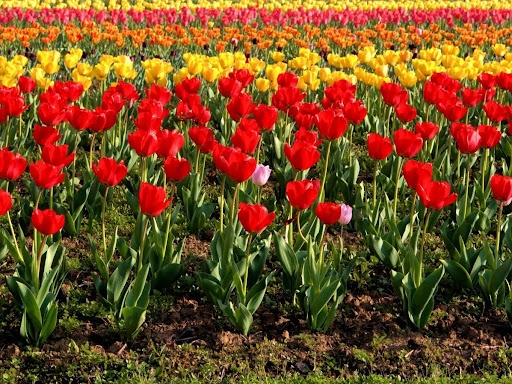
FIG 1: Photograph of colourful blossoms in a tulip garden in Srinagar, Kashmir. Licensed to
Dr. U. K. Sharma from GETTY iStock images.
And recently a headline – reporting a call between Government departments, “for a meeting to discuss the ‘protection, conservation and restoration’ of the iconic Sun temple at Martand (in Kashmir)”, (Ref.1).
Surprised? That there is a renowned, now destroyed Hindu Sun Temple in Kashmir?
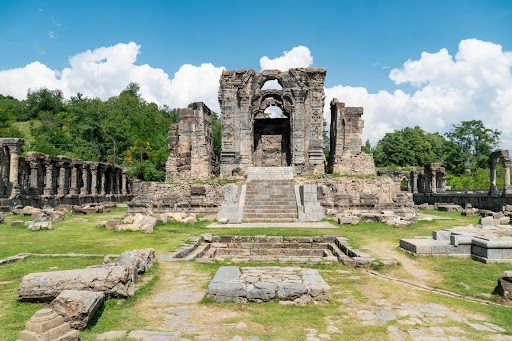
FIG. 2- Ruins of MARTAND Sun temple, Anantnag, KASHMIR. Licensed to Dr. U.K.Sharma, from
GETTY iStock images.
“Kashmir was famous in its heyday as a famous centre of Vedic learning. This region of Bharat ranked with Varanasi as a seat of learning, that too of the Vedas.”
“Kasmira was known as the centre of knowledge in ancient India.”
If one sought VedaVidya (to learn the Vedas), one was advised “Kasmiran gacchami or Varanasim gacchami”- go to Kashmir or go to Varanasi, (Ref.2).
The Sharada Peeth, now in utter ruin in PoK owing to the vagaries of geopolitics, was once a famous centre of Vedic learning.
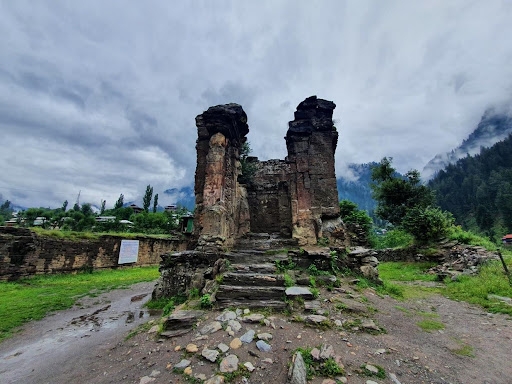
FIG. 3 – Ruins of SHARDA PEETH, Neelam valley, Kashmir, Currently PoK. Licensed to
Dr. U. K. Sharma from GETTY iStock images.
“Sharada Peeth, (Sarada Pitha) the great centre of Kashmiri learning and a repository of manuscripts, was at the northwest corner of the valley…The first millennium BCE was a period of great intellectual activity in this region …..”
“ …. we have evidence of images of Krishna, Shiva and the Goddess in regions just beyond Kashmir that go back at least to the third century BCE.”
“The name of Kashmir …. eventually identified with the Goddess Kasmira, a form of Uma.”(Ref. 3).
“Besides being a famous temple whose construction resembles that of Martand in Kashmir valley, Sharada Peeth, as can be understood from the name, became a great center of ancient Hindu learning. Scholars from far and wide —- as far as Gandhara (Kandahar) to its west and Trigarta (Himachal) to its east — seekers of knowledge flocked to this great seat of learning of ancient Kashmir.”(Ref. 4).
The indigenous almanac used by the Kashmiris and other Hindus of Bharat even today, dates back 5100 years!!!
“On the auspicious occasion of the coming Navreh (New year or Nav-Varsh Pratipada) this year on 9th April 2024, the "Saptrishi Samvat" will complete five thousand and one hundred years of its existence…… a living evidence of the Civilization of Kashmir and its continuity for the last more than five thousand and one hundred years.” (Ref.5).
“Hindus of Kashmir valley claim themselves to be Saraswat Brahmins and trace their ancestry to the Saraswat Brahmins living along the course of the legendary river Saraswati, which formed the cradle of Vedic civilization of India.”
“There is enough ground to believe that the people of Kashmir formed a part of Saraswati civilization…. The human skeletons found at Burzahom in Kashmir point to a common ancestry of the people of northern India, who in the ancient times lived along the banks of the river Saraswati.”(See Fig.4).
(These excerpts have been taken from the book “Kashmir: Hindu Shrines” written by C.L. Gadoo)(Ref. 6).
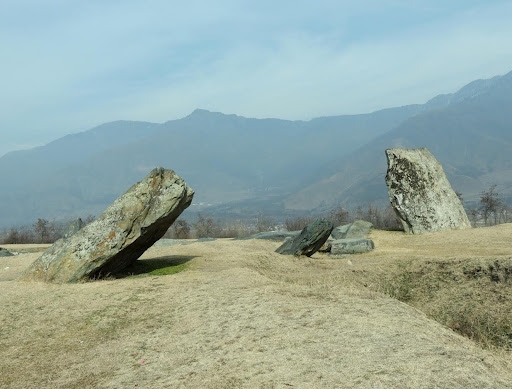
Fig. 4: Burzahom, Neolithic site in Srinagar, Kashmir. Licensed to Dr. U.K.Sharma from GETTY iStock images.
“… the Saraswati of Vedic times did indeed exist and that it was a major center of the civilization known generally as the Indus Civilization”.
“Some have dated the civilization back further still, to 7000 BCE …… “Perhaps the Indus-Saraswati civilization is the Vedic civilization….”
“To understand the rise and fall of this civilization, we have to go way back, very far back - basically to about fifty million years ago.
We must go back to the time that the Gondwana supercontinent was on the move. ……. creating the world’s tallest mountain range, the Himalayas, ……. and attached the subcontinent of India to Asia.”(Ref. 7).
These well recorded and verifiable claims are so unfamiliar to the average Indian today, that one wonders why pride in our ancestry has not uncovered them until recently.
For this reason, I embark today on an exploration of Kashmir- cultural, civilisational, geological, anthropological, and much more.
Did you know that the Kashmir region was well known to ancient Indians, and featured in the Vedas, as well as in the epic Ramayana and Mahabharata?
I will return to this amazing fact in greater detail in the next instalment of this article; meanwhile let us understand how the landmass of Bharat was formed, with Kashmir nestling in Her arms.
Kashmir has been, is, and doubtless will always be an inalienable part of the landmass that was, is, and will be Bharat.
What is the history of THE culture, civilisation, traditions, peoples, their beliefs, practices, and lives of the Kashmir region?
What did Kashmir contribute to the evolution of our culture, and civilisation?
In order to attempt an answer to this question, I constructed an abbreviated timeline of events – beginning with the formation of the landmass of Bharat. I was very pleasantly astonished to learn many new ‘FIRSTS’ about Bharat.
I take pleasure in sharing these ‘FIRSTS’ with you -most of all, to the ‘FIRST of , Bharat being an intellectually, spiritually, medically, aesthetically advanced civilisation, which as I had covered in my previous article, was also scientifically advanced enough to design flying vehicles and what appears to have been nuclear weapons, (Ref. 8).
DID YOU KNOW? - BHARAT has the WORLD’S OLDEST LANDMASS? - the WORLD’S OLDEST ROCK is preserved as a PROTECTED STRUCTURE IN BENGALURU?
DID YOU KNOW - the magnificent oceanic mammal, THE WHALE, ORIGINATED IN THE INDIAN LANDMASS AS A FOUR FOOTED LAND ANIMAL?
DID YOU KNOW - that HORSES EVOLVED ON THE INDIAN SUBCONTINENT very close to Mumbai? This was a specific breed with 34 ribs, distinguished from western horses which have 36 ribs, (Ref. 9).
Let us begin our exploration with the formation of Mother Earth Herself, and Bharat within.
5 BILLION YEARS AGO, it all started when the SUN was formed
4.57 BILLION YEARS AGO, the EARTH was formed as a hot ball of molten iron spinning around the Sun.
2 BILLION YEARS AGO – the Universe was formed.
The estimate of the age of the Universe is given in the Puranas.
Dr. Arthur Holmes, Regius Professor of Geology at the University of Edinburgh has appreciated what he termed ‘India’s generous concept of past’…… according to the Hindu calendar (Visnu Purâna), in A.D. 1974 the Earth was 1,972,949,048 years old.
“ this characteristically precise assessment is of the same order as the 2,000 million years … the most widely favoured estimate for the age of the expanding universe.”(Ref. 10).
3.2 BILLION YEARS AGO –the world’s oldest rocks began to be appear as today’s BHARAT, according to the Geological Survey of India.
“About 3.2 billion years ago, granite forming today’s Nandi Hills in Bengaluru were formed.… a large rock in the middle of Lalbagh Botanical Gardens in Bengaluru is protected by the Geological Survey of India as one of the oldest rocks in the world.” It is part of the Dharwar craton, and the landmass that makes up peninsular India formed around this rock.
As Earth cooled, molten land masses began to float over the surface of the water which formed the major part of Earth. A large land mass called PANGEA was formed, which broke up into smaller portions, floating away from each other, and ultimately becoming the 5 major continents of the World. (Ref. 11).
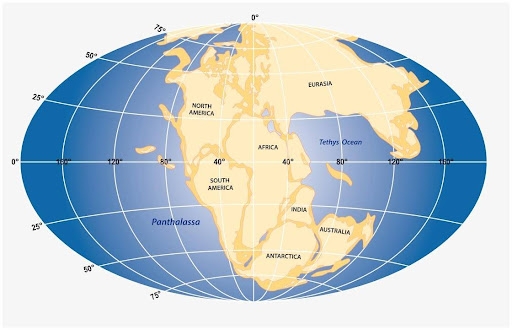
FIG. 5 – Vector graphic of the landmass known as PANGEA. Licensed to Dr. U.K.Sharma,
from GETTY iStock images.
GOING BACK to 3.2 BILLION YEARS – BHARAT, THE WORLD’S OLDEST LANDMASS
While the granite hills of Bengaluru were being formed 3.2 billion years ago, landmass at Singhbhum in Jharkhand was also being formed.
“ …….. the earliest continental landmass to emerge may have been Jharkhand’s Singhbhum region…… researchers from India, Australia and the US found sandstones in Singhbhum with geological signatures of ancient river channels, tidal plains and beaches over 3.2 billion years old, representing the earliest crust exposed to air.”(Ref. 12).
500 to 700 MILLION YEARS AGO – KUMAON REGION - OCEAN WATER was ENTRAPPED IN MINERALS
Indian and Japanese scientists have shown that in the central Himalayas in Uttarakhand, mineral deposits contain water droplets entrapped in magnesite crystals, from an ancient ocean which was 500-700 million years old.
“……… there was once a vast ocean where the Himalayas now stand…….. named Tethys …. not from the Himalayas’ current geographical location.” the first author of the paper stated.(REF. 13),(Author’s note: See Figure 5).
250 MILLION YEARS AGO – FIRST EVIDENCE OF TSUNAMI IN KASHMIR
As the landmass destined to be Bharat travelled upwards, it carried with it evidence of THE WORLD’S FIRST RECORDED tsunami well preserved in the rocks, finally uncovered in the Guryul ravines of present day Kashmir.
“…. a repository of fossils that hold evidence of the Permian–Triassic extinction event, dating as far as back 260 million years….. the world's first-ever recorded tsunami event is well preserved in the rocks of Guryul Ravines.”(REF. 14).
140 MILLION YEARS AGO – THE INDIAN OCEAN IS FORMED
India and Madagascar broke away from Australia and Antarctica and the Indian Ocean was formed.
118 MILLION YEARS AGO – BHARAT BREAKS AWAY
India finally broke away from Madagascar and began floating upwards on a very long journey. She crossed over a hotspot of Reunion about 68 million years ago, and began outpouring of molten lava as she floated up wards.
65 to 68 MILLION YEARS AGO – THE WESTERN GHATS FORMED
The lava cooled and formed the Western Ghats, making them 65 million years old.
Incredibly, the beautiful Kailash Temple of Ellora is a product of this old lava formation, which created the “Deccan Trap” 68 million years ago, (Ref. 11).
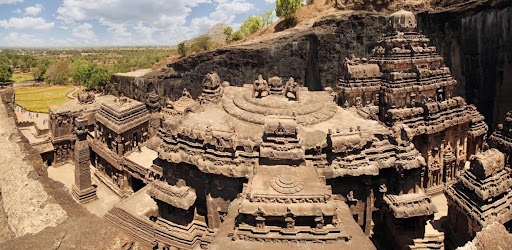
FIG. 6 - Photo of Kailash temple, Ellora caves, Maharashtra, India; showing the structure carved
out from old lava formation. Licensed to Dr. U.K.Sharma from GETTY iStock images.
50 MILLION YEARS AGO – HIMALAYAS ARE BORN
India’s land mass then collided with the Asian land mass, and pushed up a large mountainous peak, which we now call the Himalayas, estimated to be 50 million years old, (Ref. 11).
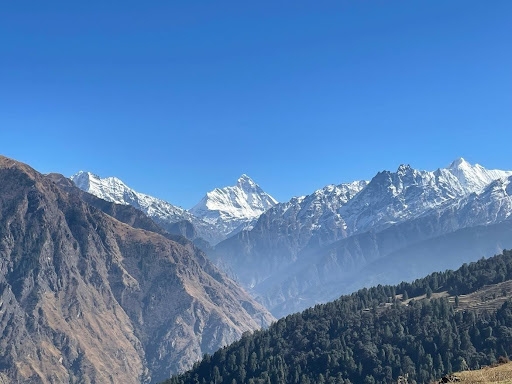
FIG. 7 - Himalayan range of mountains near Joshimath. Licensed to Dr.U.K.Sharma from
GETTY iStock images.
The formation of the Himalayas through this collision of landmasses has a bearing on the future events in the region that were associated with the birth as well as the demise of one of the world’s oldest and most developed civilisations – the Saraswati civilization.
45 to 55 MILLION YEARS AGO – THE FIRST WHALES WALKED IN KASHMIR
“………. the discovery of the remains of Indohyus by Prof Bajpai and Dutch-American paleontologist Hans Thewissen, have been notable in tracing the ancestry of whales to India.”
The Indohyus existed in western India, nearly 45 to 55 million years ago,with features that are only found in whales….. “the structure of its middle ear was exactly the same as whales. All its other features indicated that it was a land animal, including well-developed legs and teeth.”
“…….early whales started out with sound transmission mechanisms found in land mammals which were slowly modified as they took to water.”(Ref. 15).
(Author’s note: The time taken for the landmass destined to become Bharat to collide and form the Himalayas is 118 million minus 50 million, i.e., 68 million years. It is easy to appreciate that the whales evolved from a land mammal in this time, and finally entered the Ocean before the collision of land masses.)
55 MILLION YEARS AGO - THE FIRST HORSE RUNS IN BHARAT
The Western ghats are about 65 million years old. Life forms began appearing around this time.
An ancient ancestor of the horse roamed the area between what is now Gujarat and Mumbai around 54.5 million years ago.
“Working at the edge of a coal mine in India, a team of Johns Hopkins researchers and colleagues have filled in a major gap in science's understanding of the evolution of a group of animals that includes horses and rhinos.…. likely originated on the subcontinent when it was still an island headed swiftly for collision with Asia, the researchers report today in the online journal Nature Communications.”
“ …… more than 200 fossils belonged to an animal dubbed Cambaytherium thewissi, …….dated the fossils to about 54.5 million years.”(Ref. 16).
2 MILLION to 1.2 MILLION YEARS AGO – THE ORIGIN OF MAN IN BHARAT
“There is also evidence that hominids occupied the Punjab region of northern India as early as 470,000 BC. Stone hand axes and other primitive chopping tools found in northern India have been dated to 500,000 BC. Other stone artifacts found in India have been found dating from two million years ago.”(Ref. 17).
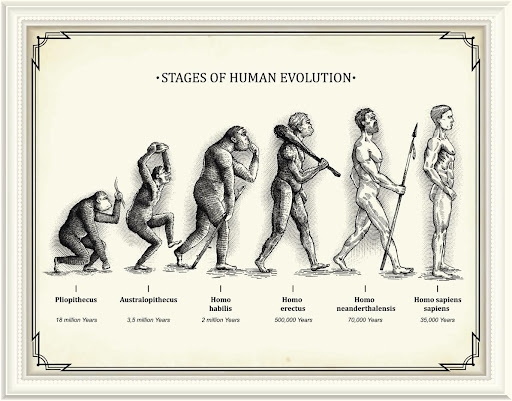
FIG. 8 – Vector picture of ape to human stages of evolution. Licensed to Dr.U.K.Sharma from
GETTY iStock images.
“India has a long history of human settlements. Excavations at Attirampakkam in Tamil Nadu have conclusively shown the presence of Homo erectus in India at least 1.5 million years ago.”
“ ………. Early humans populated the whole of peninsular India and left behind their art and artefacts at Upper Palaeolithic sites like Bhimbetka (Madhya Pradesh), Patne (Aurangabad, Maharashtra) and Muchchatala Chintamani Gavi (Kurnool, Andhra Pradesh).” (Ref. 18).
(Author’s note: see Figs.9,10 and 11 below)
300,000 BP to 20,000 BP –
“If we consider the combined evidence of the above, which is hard scientific evidence, it would mean that indigenous archaic modern humans existed in India at least by 300,000 BP..”
“…….. there are many findings like Narmada Man skull (300,000 Before Present [BP]), Laterite Baby skull (150,000 BP) near Chennai and Rhodesia Man, which squarely contradict the OAT, and instead points to the origin of humans in Indian subcontinent. Starting from earliest times to 20,000 BP, Indians had spread to Europe, China, Australia and Americas and created human colonies and settlements.”(Ref. 19).
(Author’s note: OAT is “Out of Africa Theory of evolution, the popular theory stating that Africa is the cradle of civilisation).
“The earliest evidence of deliberate patterning of stone that had some symbolic purpose – dating to 300,000 to 150,000 years ago have been found in the sandstone caves of India; they appeared in Africa much later around 100,000 years ago.”(Ref. 9).
45,000 YEARS AGO – THE FIRST HUMAN SETTLEMENT IN BHARAT
“Kalpi is a quiet town …… on the banks of the Yamuna River, between Jhansi and Kanpur in Uttar Pradesh, ……….. steeped in history. Kalpi’s story goes as far back as 45,000 years, to the Middle Palaeolithic Age (broadly, 300,000 to 30,000 years ago). It is one of the few sites in the Ganga-Yamuna doab where evidence of human settlement going back to the Stone Age has been found, (Ref. 20).
35000-20000 BP – WORSHIP OF DEVI SEEN IN BHARAT
“ …… evidence of worship of Devi Mata (Mother Goddess), which continues in an unbroken tradition till today …. a shrine at Upper Palaeolithic/Epipalaeolithic site at Baghor I in Son Valley. (Misra, 2006)”, (Ref. 21).
“30,000 B.P.” – ART FORMS ARE RECORDED IN BHARAT
“Bhimbetka Caves in Madhya Pradesh located in northern fringes of the ancient
Vindhyachal ranges are home to the extraordinary rock shelters and paintings. ……….. , the scenes usually depict hunting, dancing, horse and elephant riders, animal fights, honey collection, decoration of bodies, disguises, masks and different type of animals etc. Animals such as bison, tiger, rhinoceros, wild boar, elephants, monkeys, antelopes, lizards, peacocks etc. have been abundantly depicted (4).”
“Thus domesticated horse was known as early as 35,000 BP because there is a seated figure on a horse.”(Ref. 19).
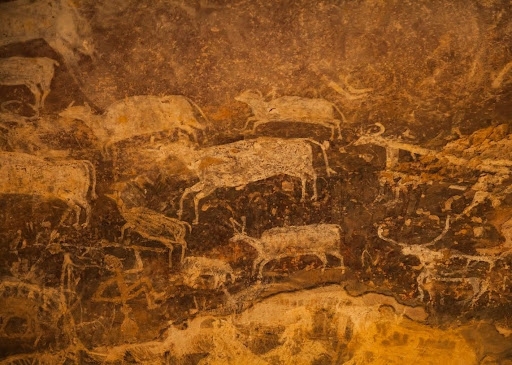
FIG. 9: Example of rock paintings of animals from Bhimbetka caves, Madhya Pradesh,
India. Licensed to Dr. U.K.Sharma from GETTY iStock images.
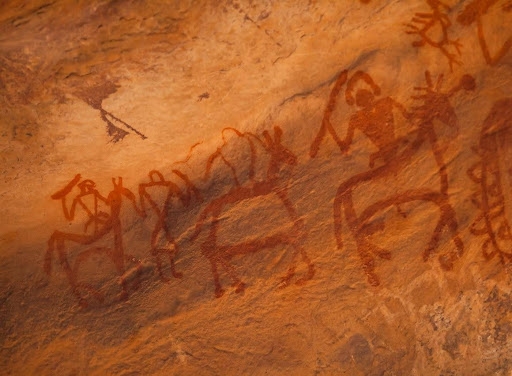
FIG. 10: Example of rock art from Paleolithic era, Bhimbetka rock shelters, Madhya Pradesh,
India, showing riders on horseback. Considered to be one of the earliest traces of organized
human settlements In India, and the beginning of the Indian Stone Age. Licensed to Dr. U.K.
Sharma, from GETTY iStock images.
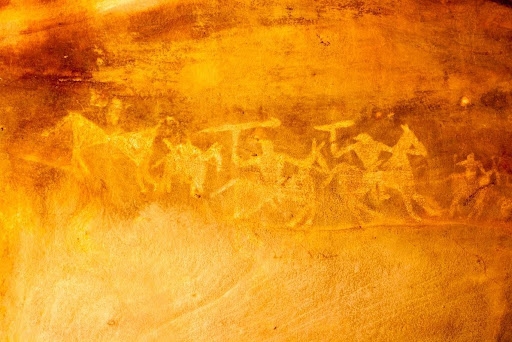
Fig. 11: A painting from Bhimbetka caves, Madhya Pradesh, India. Showing armed riders
mounted on horses in a possible hunt or battle. Licensed to Dr. U.K.Sharma from GETTY
iStock images.
(Author’s note: This conclusion has been disputed by some historians. I have included it, arising from proof given above that a precursor of the horse first ran in Bharat, and there is no reason why it would not have been domesticated).
15,000 BP – AN IMPORTANT GLOBAL MALE LINEAGE ORIGINATES IN BHARAT
“The Y-chromosomal (patrilineal) haplogroup R1a1a (also known as R-M17), one of the most important global male lineages found in 15% of humanity, widespread in Europe, Russia and India …in fact originated in India around 15,000 BP or
earlier…”.(Ref. 21).
12,000 to 10,000 BP – FROM ART TO WRITING AND COMPOSITION: THE WORLD’S OLDEST BOOK, THE RIGVEDA
…..” the Sanskrit RigVeda is the oldest piece of literature in the world. Reverend Morris Philip, in his book ‘The Teaching of the Vedas (p 213), concludes,”….. we may safely now call the Rigveda is the oldest book not only of the Aryan community but of the whole world.” (Ref. 22).
The Rigveda has been dated from 7th millennium B C to before 10,000 B C, (Refs. 17, 23, 24 and 25).
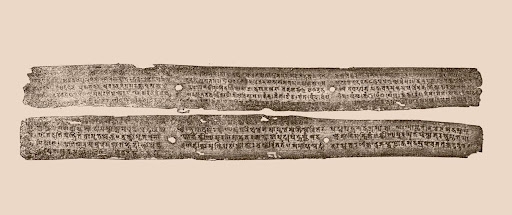
Fig 12: Facsimile of oldest palm leaf manuscript from India, purely
representational. Licensed to Dr. U. K. Sharma, from GETTY iStock images
9000 BP – EVIDENCE OF DENTISTRY IN BHARAT
“Dentistry as a medical science was quite common 9000 years ago, and ancient Indian dentists not only performed simple drilling, but also complex procedure to hollow out a cavity deep inside the tooth using sophisticated technological instruments like drills tipped with shards of flint.”
8000 BP/6000 BCE
“ ….. by 6000 BCE there is evidence of organized agrarian societies and a granary. Rakhigarhi in Haryana, the largest Saraswati-Sindhu site, also shows continuous settlement from 6500 BCE.”
7,500 BP – RICE IS CULTIVATED IN KASHMIR VALLEY
“Wild rice cultivation appeared in the Bolan and Ganges valley regions of northern India as early as 5000 BCE and by this period agricultural communities had become quite widespread in Kashmir region.”(Ref. 21).
CONCLUDING REMARKS:
“It is to be noted that the intellectual systems of traditional India, the ancient civilization that flourished around the river Sindhu have developed in the land of Kashmir. An Indian poet has the following to say about Kashmir:
“Samsare Bharatam saram tatrapi cha Himalayam Tatrapi cha Kasmiram!”
which can be translated as “Bharata is supreme-most in the world, Himalaya is the supreme-most in Bharata and Kashmir the supreme most in Himalaya”.(Ref. 2).
Among the multitude of ‘FIRSTS’ that have been covered here, it is obvious to the unbiased mind that from the very beginning after Her tumultuous birth, Bharat and the Vedic peoples of the Saraswati civilisation carved out a place, for posterity, as contributors and educators of the World, which WE MUST NEVER ALLOW TO BE FORGOTTEN, OR OVERLOOKED OR INDEED CONCEALED OR DISMISSED.
The fate of the Saraswati was closely linked to that of Kashmir; and this beautiful region of Bharat, in turn, played a key role in Her evolution, culture, spiritual and artistic development since Vedic times. Kashmir region of Bharat is closely tied as mentioned above to her place in our National evolution. I will cover this important aspect of Vedic ancestry of our Kashmir region in Part II of this article.
Find REFERENCES here;
--


